Why does Diana Miglioretti study the biostatistics of cancer screening?
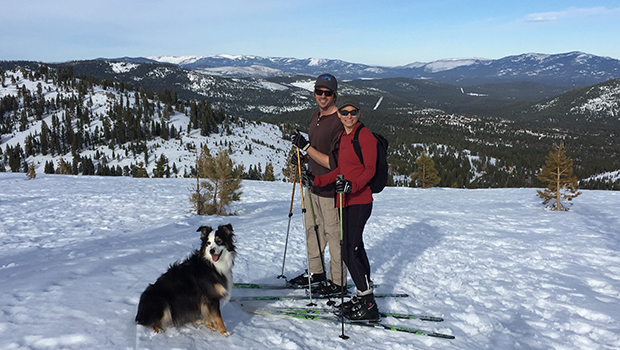
Miglioretti and her husband Jason and their dog Kindred backcountry skiing in Truckee, CA.
Family history sparks interest for KPWHRI senior investigator, UC Davis professor, and co-leader of the BCSC.
We spoke with Diana L. Miglioretti, PhD, senior investigator, Kaiser Permanente Washington Health Research Institute (KPWHRI); and Dean’s Professor of Biostatistics in the Department of Public Health Sciences, School of Medicine at the University of California, Davis.
What motivated you to study screening for cancer?
It’s personal. My mother’s grandmother died from breast cancer when she was 32. Back then, there was no screening for breast cancer or even breast cancer awareness, so her cancer was detected very late. So I understand the potential benefits of regular screening for cancer. My mother’s mother and sister were both diagnosed with breast cancer in their 40s—but survived it. Because of my family history, I grew up thinking I had a 100 percent risk of developing breast cancer myself. But after studying biostatistics, my perspective changed. Since my aunt, no one in my family has had breast cancer, and we don’t have genetic mutations predisposing us to the disease. Either the genes were not passed down or my family’s cluster of breast cancer diagnoses was an unlucky fluke—and a lesson in statistics: Even if something is unlikely, it can still happen.
Why is Kaiser Permanente a good place to study cancer screening?
My interest in screening for cancer is what led me here, because Kaiser Permanente Washington Health Research Institute is part of the National Cancer Institute-funded Breast Cancer Surveillance Consortium (BCSC), which I now co-lead. The BCSC is a network of breast imaging registries across the country that has provided valuable evidence about screening’s benefits and harms. With its complete capture of patients’ health care, Kaiser Permanente in Washington has been a really valuable place for me to do research, and my BCSC work is really rewarding for me personally.
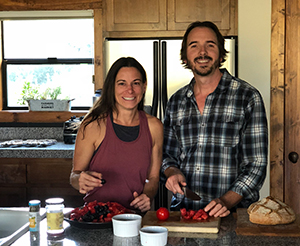
Miglioretti and her husband Jason, who is an artist, making dinner together, including local organic tomatoes and their homemade whole-grain bread.
How has your work has evolved?
Because of my background in biostatistics, I started out focusing mostly on analyzing data for studies led by other investigators. But then I became really interested in finding ways to improve screening and started leading BCSC studies. I am motivated by figuring out how to use diagnostic imaging thoughtfully and minimize the unnecessary harms from it, including false-alarms and unneeded radiation exposure. I remember, when people first started questioning whether the benefits of repeated annual mammograms outweigh the harms, I thought, “Really? It’s only an X ray.”
But I began learning more about the potential negative consequences of mammography, including overdiagnosis (diagnosis of disease on screening that would never harm a person in their lifetime) and false-positives (when disease appears to be present—but isn’t). I also became interested in the idea that ionizing radiation from screening and diagnostic imaging—especially from higher-dose CT scans—can actually cause cancer. CT scanning can produce very clear images of the internal anatomy and is an extremely valuable tool for diagnosing disease. But a single CT scan can deliver as much ionizing radiation as 200 X-rays, and a few CTs can cause radiation exposure in the range that has been strongly linked to a small but significant increase in cancer risk, especially for children and teens. When CT is necessary for medical care, this small risk is clearly offset by the benefits. But experts believe a third of CTs performed in the United States are not medically necessary; and in many cases, another imaging modality that doesn’t use ionizing radiation, such as ultrasound or MRI, could be used instead.
Overuse of imaging is part of a widespread trend in the United States: We tend to use a lot more medical services than other countries without improved health outcomes to show for it. More health care is not always better for health. I’m really interested in identifying areas where we can reduce overuse of screening, not just because of cost but because of the cascade of other downstream tests and anxiety that can come from that overuse. Examples include false-positives, incidental findings (when a test for one disease detects unrelated abnormalities that need to be followed up), and resultant unnecessary biopsies and follow-up testing, which are stressful, inconvenient, and carry some risk.
My recent paper in JAMA Internal Medicine is an example of this kind of work: We found that women with simple ovarian cysts are not at increased risk for ovarian cancer, so there’s no need to do follow-up imaging, unless a woman is feeling pain. On the other hand, some women receive too little screening for some cancers. I’m collaborating on a study of women at Kaiser Permanente in Washington who are overdue for screening for cervical cancer. We mailed them a human papillomavirus (HPV) test kit that they could do on their own, at home. We hope this will lead to more early diagnoses of cervical cancer.
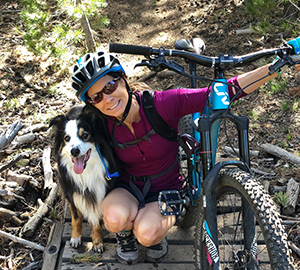
Miglioretti mountain biking with her dog Kindred in Truckee, CA.
What else excites you most about your research?
I’m really excited about building the evidence base toward the goal of personalizing screening for cancer. I’m excited because I think we’re ready for this change now. Kaiser Permanente in Washington was one of the first places to use risk-based screening schedules. And now the general community seems more open to moving from one-size-fits-all to a more personalized approach. We’re recognizing that certain people might benefit from more screening, and some might do just as well with less screening, which will reduce the potential for negative consequences from the test.
I’m collaborating on a trial that is evaluating less vs. more intensive strategies for following up lung nodules found on screening or found incidentally on a chest scan performed for another reason. And we’re conducting a BCSC study to try to target which women might need to be screened more intensively for breast cancer—and which women might not need so much screening. The evidence we provide is likely to lead to changes in guidelines that will improve health care for millions of people.
What keeps you going outside of work?
My husband and I live in the mountains in Truckee, California, in the Lake Tahoe area. We cook together almost every night, using whole organic foods. I bake naturally leavened, whole-grain bread. It’s so delicious, it would be hard to go back to store-bought bread. Our dog Kindred, an Australian shepherd, helps to keep us active by forcing us to go outside and take breaks away from work. We get outside almost every day, either mountain biking, hiking, rock climbing, or, in the winter, skiing. I also try to do yoga at least twice a week, even if it’s just for a half hour, to increase flexibility and reduce my stress. I try to meditate every day: That doesn’t always happen, but that’s my aspiration.
Healthy Findings Blog
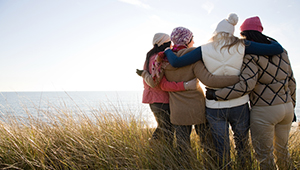
No need to follow up simple ovarian cysts
New study shows women with simple cysts are not at increased risk of ovarian cancer.
Read about it in Healthy Findings.
News Release
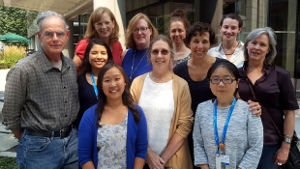
KPWHRI shares in $17 million grant to improve breast screening
Aug. 8, 2017–National Cancer Institute support continues nation's largest collection of breast imaging data and funds three studies to personalize screening
Read it in News and Events.
Healthy Findings Blog
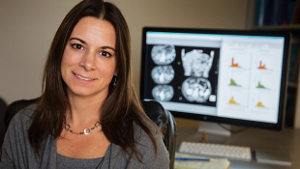
Can standardized CT scans improve safety?
Dr. Diana Miglioretti and University of California colleagues are developing and testing a new way to lower radiation doses while still producing sharp images.
Read about it in Healthy Findings.


